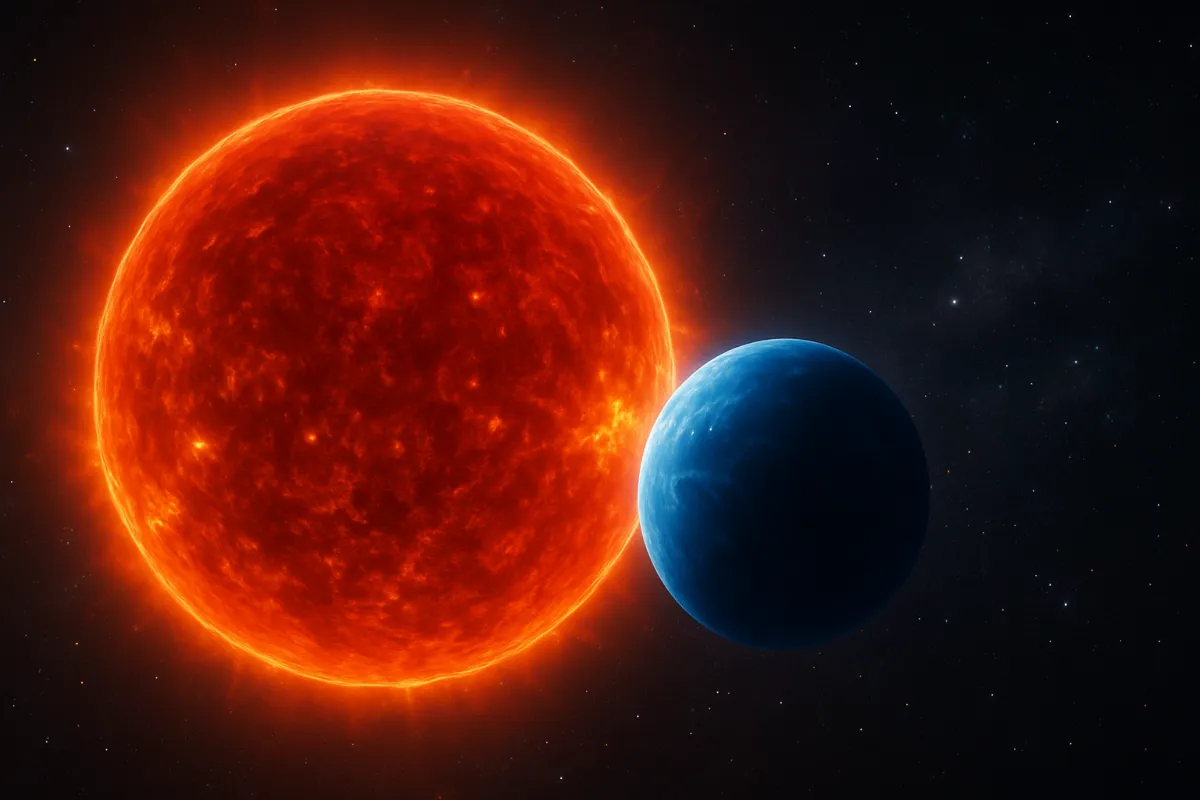| Summary |
|
Astronomers have discovered a giant planet circling a star only one-fifth the mass of our Sun, raising new questions about how such worlds form. The planet, named TOI-6894 b, is about the size of Saturn but only half its mass, making it unusually light and puffy. It orbits its small red dwarf host star every 3.37 days.
The discovery, confirmed by space- and ground-based telescopes, adds to a short list of giant planets found around low-mass stars. Standard theories say these stars should not have enough material in their disks to build planets this large, making TOI-6894 b a challenge to explain.
NASA’s Transiting Exoplanet Survey Satellite (TESS) first spotted signs of the planet when it dimmed its star’s light during transit. Ground-based telescopes, including SPECULOOS and ExTrA, confirmed the repeated dips and ruled out false positives from nearby stars.
To measure the planet’s mass, astronomers used precise spectrographs such as ESPRESSO in Chile and SPIRou in Canada. By tracking the star’s wobble, they determined TOI-6894 b has only 0.17 times Jupiter’s mass despite a radius of 0.86 Jupiter radii.
Models suggest TOI-6894 b contains about 12 Earth masses of heavy elements, more than expected for a planet around such a small star. Its temperature, roughly 418 Kelvin (about 145°C), makes it cooler than hot Jupiters but still warm enough for an atmosphere rich in methane.
This places it between the giant planets of our solar system and the very hot exoplanets seen around larger stars. Astronomers say studying its atmosphere could reveal how it formed and evolved.
Current models of planet formation predict that red dwarfs lack the disk material needed to build massive planets before the gas disappears. The existence of TOI-6894 b suggests either more efficient core growth or alternative processes like disk instability, where parts of the disk collapse directly under gravity.
The discovery follows a similar case, LHS 3154 b, another giant planet around a mid-sized red dwarf. These rare finds indicate that planet formation around small stars may be more varied than expected.
Astronomers also checked for other possible explanations. High-resolution imaging showed no hidden stellar companions. Archival photos confirmed no background star was affecting the light. The planet’s transits looked the same in different colors, confirming it was not an eclipsing binary system.
Measurements showed the orbit is nearly circular, with an eccentricity under 0.1, meaning the planet’s path around its star is stable.
Surveys show giant planets are extremely rare around mid-sized red dwarfs, with fewer than 1% hosting them. TOI-6894 b forces scientists to reconsider how much material these stars can gather during their early years.
One idea is that the disks around such stars might be dustier than thought, or that small pebble-sized particles play a bigger role than expected in building planet cores.
The planet’s deep transits (blocking about 17% of its star’s light) make it an excellent target for detailed study. The James Webb Space Telescope (JWST) could reveal methane, metals, and clouds in a single observation. Ground-based observatories may also probe its atmosphere and weather.
By studying TOI-6894 b, astronomers hope to better understand how giant planets form around stars once thought too small to host them.
Source: A transiting giant planet in orbit around a 0.2-solar-mass host star

